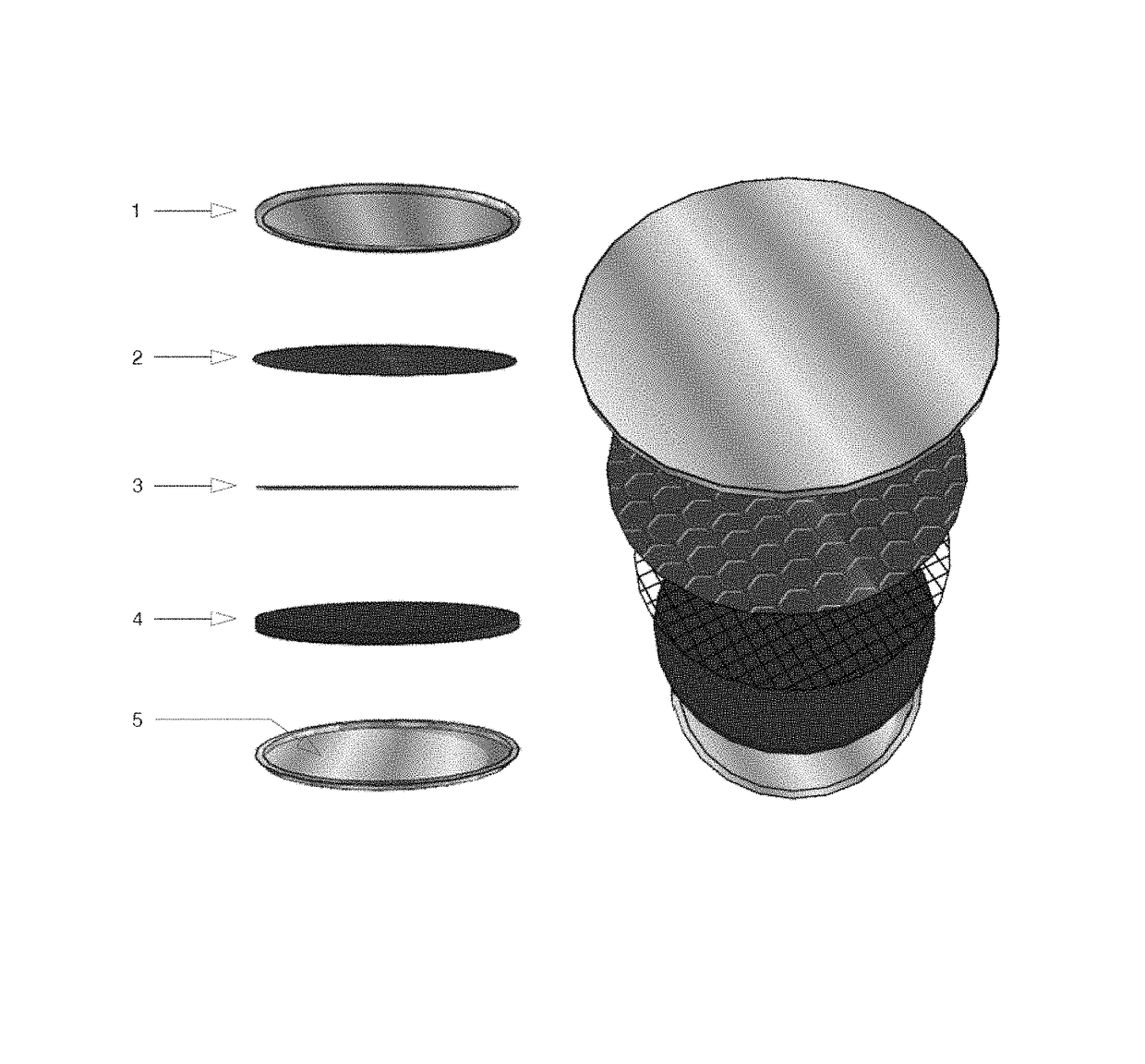Electrochemical cell aluminum-manganese
a technology of aluminum-manganese and electrochemical cells, which is applied in the direction of electrochemical generators, cell components, batteries, etc., can solve the problems of high cost of rechargeable batteries, inconvenience of recharging, and difficulty or cost of main power supply
- Summary
- Abstract
- Description
- Claims
- Application Information
AI Technical Summary
Benefits of technology
Problems solved by technology
Method used
Image
Examples
Embodiment Construction
[0018]In this way, a first object of the invention is to provide an electrochemical cell characterized in that it comprises a positive electrode comprising manganese as a positive electrode material physically separated, via a physical separator (which preferably consists of a sheet composed of at least one plastic polymer material capable of supporting the internal saline environment of the cell), from a negative electrode which comprises an aluminium alloy as the negative electrode material; and where the said positive and negative electrodes are electrically connected by an neutral pH electrolyte ion conductor between both polarities (positive and negative). In this manner the electrolyte, on bathing both electrodes, permits the passage of ions so that the electrochemical reaction may take place.
[0019]In a preferred embodiment, the electrochemical cell is also surrounded by a casing which houses all of the components of the cell in its interior. This casing is constituted of elem...
PUM
| Property | Measurement | Unit |
|---|---|---|
| diameter | aaaaa | aaaaa |
| voltage | aaaaa | aaaaa |
| structures | aaaaa | aaaaa |
Abstract
Description
Claims
Application Information
 Login to View More
Login to View More - R&D
- Intellectual Property
- Life Sciences
- Materials
- Tech Scout
- Unparalleled Data Quality
- Higher Quality Content
- 60% Fewer Hallucinations
Browse by: Latest US Patents, China's latest patents, Technical Efficacy Thesaurus, Application Domain, Technology Topic, Popular Technical Reports.
© 2025 PatSnap. All rights reserved.Legal|Privacy policy|Modern Slavery Act Transparency Statement|Sitemap|About US| Contact US: help@patsnap.com

